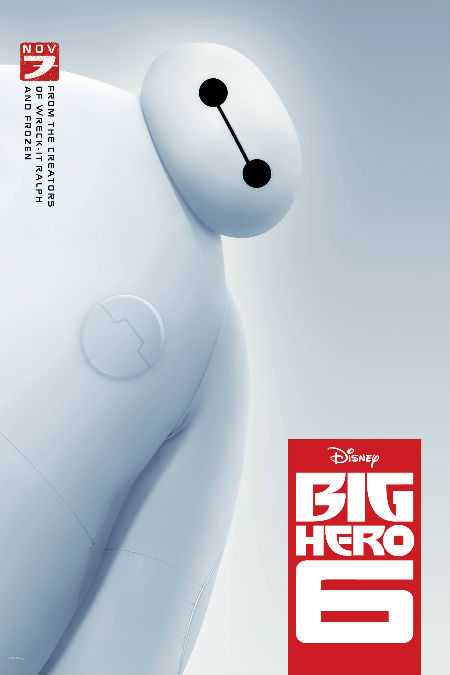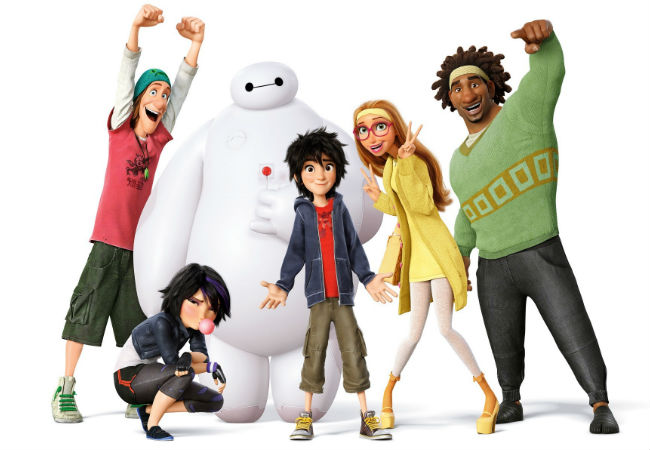
Much like Guardians of the Galaxy before it, Big Hero 6, directed with a vivacious sense of fun and deep sense of poignancy by Chris Williams and Don Hall, is that rare Marvel-sourced movie that manages to transcend the well-established bonds of its comic-book antecedents.
Not that there is anything wrong with the comic books and movies that have gone before it, of course; they have given us a slew of wonderful stories well-told, of humble men and women discovering powers great and small that have elevated them from the ranks of mere mortals to those capable of taking on the darkness and travails of life and effecting some momentous change, both for themselves and for humanity at large.
But there is a pattern in place, and it is slavishly followed, all of which means a consistent product sure, much like McDonalds but one which feels more than a little bit been-there-done-that-got-the-LEGO-tie-in after a while, however enjoyable it may be.
Like the Chris Pratt-starring juggernaut before it however, Big Hero 6, based on a couple of little-known Marvel comic book miniseries, has seen fit to play with the formula just enough to render itself as a wholly distinctive film fairly brimming with deeply-affecting sadness, giddy, warmhearted fun, and a sense that justice can prevail after all, even it it doesn’t heal the still-open wounds of loss and grief.
Much of the film’s appeal lies with the main hero of the story, a puffy marshmallow son-of-Michelin-Man Baymax (perfectly voiced by Scott Adsit), a delightful, sweet-natured robot created by robotics genius Tadashi Hamada (Daniel Henney), whose sole overriding imperative as a “healthcare companion” is to apply band-aids or heart defibrillators or simply to help heal a broken heart with hugs and the gathering together of someone’s friends for love and support.
When Tadashi is killed in tragic circumstances, Baymax is left to languish until Tadashi’s younger brother, Hiro (Ryan Potter) overwhelmed by grief and unable to re-engage with life despite the loving entreaties of his cafe-owning extrovert aunt and guardian Cass (Maya Rudolph), hurts himself, triggering Baymax’s operating system and ushering in a whole new chapter in his short 14 year old life.
Quickly fashioning Baymax into a warrior of sorts – the addition of some killer karate moves do little to diminish Baymax’s overall hug-ability and lovability – he sets off after the Kabuki-mask wearing villain who controls an army of stolen microbots which Hiro created, who he believes is the one responsible for his brother’s death.
While this leads down reasonably predictable paths – the sword of vengeance is beaten into the plowshare of love and understanding, the gathering together of Tadashi’s old university colleagues into a ragtag group of superheroes and the big climactic fight with the villain in the finale, Baymax manages to transform every scene he is in into one of whimsy, sweet silliness and deeply-affecting emotion, subverting the Marvel formula so that Big Hero 6 becomes much more than the sum of its derivative comic book hero parts.

The sheer adorable nature of Baymax aside, with whom Hiro shares more than one deeply touching scene – the one where they remember Tadashi together is especially moving – is paired to perfection with the willingness of screenwriters Robert L. Baird, Dan Gerson and Jordan Roberts to wear the heart of the movie’s storytelling DNA very much on its sleeve.
The death of Tadashi, and the subsequent temporary loss of another major character later on, are not simply grist for the film’s narrative mill; rather they suffuse almost every scene, not in some heavy handed, emotionally-manipulative way but as the motivation for just about everything the characters do throughout the story.
They are the reason why Hiro and the rest of his wisecracking, possessed of more scientific nous than street smarts team, do what they do and it results in an immensely emotionally-rich and pleasingly layered film that has the sort of substance that turns what could have simply been another join-the-dots comic book action film into something wholly different.
All of these pleasing narrative and character flourishes are augmented by the highly-colourful, imaginative look and feel of Big Hero 6, set in the near-future fusion-tropolis of San Fransokyo, which blends East and West together into a visual template that beguiles the eye and gives it a distinctive look, with trolley trams and Victorian rowhouses sitting happily cheek-by-jowl with brilliantly-lit animated signs, noodle houses and futuristic transport systems.
It’s a setting that lends the movie its own, one-of-a-kind universe in which to play and it features heavily, with all the action taking place in and around and over it, and which matches to a tee the thematic willingness of the film’s producers to mix things up quite a bit in their pursuit of a genuinely different film that while it is made up of a whole lot of off-the-rack Marvel parts, is a wholly distinctive creation of entrancing fun and emotional authenticity, much like Baymax himself.
* It is worth taking the time to get to Big Hero 6 nice and early to catch the delightful short by Patrick Osbourne (Paperman) which precedes it, Feast, the sweet story of one man, a rescued orphaned Boston Terrier with a big appetite and love, beautiful love, and to stay right to the end of the credits to take in the wonderful sequence right at the end, a Marvel staple which Big Hero 6 uses well to great effect.
One thought on “Movie review: Big Hero 6”
Comments are closed.